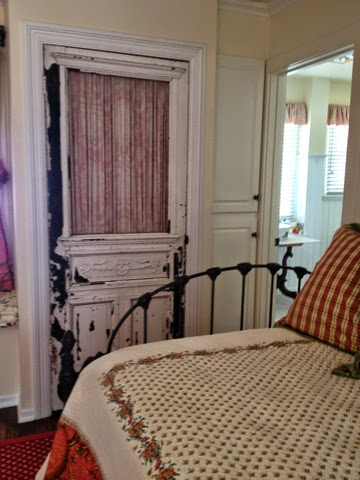A Little Present for the Holidays!
Loan Dollar Amounts INCREASE
Caroline Gerardo NMLS 324982 phone 949 784- 9699
Fannie Mae and Freddie Mac Mortgage Loan Limits UP for California
Some Counties Loan Amounts Increased $15000.+
COUNTY NAME CA /Single Family Duplex Triplex Four Units
ALAMEDA CA $418600 $ 636,150 $ 814,500 $ 984,525 $ 1 ,223,475
ALPINE CA $ 463,450 $ 593,300 $ 717,150 $ 891,250
AMADOR CA $ 424,100 $ 543,000 $ 656,350 $ 815,650
BUTTE CA 17020 $ 424,100 $ 5 43,000 $ 6 56,350 $ 8 15,650
CALAVERAS CA $ 424,100 $ 5 43,000 $ 6 56,350 $ 8 15,650
COLUSA CA $ 4 24,100 $ 5 43,000 $ 6 56,350 $ 8 15,650
CONTRA COSTA CA 41860 $ 6 36,150 $ 8 14,500 $ 9 84,525 $ 1 ,223,475
DEL NORTE CA 18860 $ 4 24,100 $ 5 43,000 $ 6 56,350 $ 8 15,650
EL DORADO CA 40900 $ 4 88,750 $ 6 25,700 $ 7 56,300 $ 9 39,900
FRESNO CA 23420 $ 4 24,100 $ 5 43,000 $ 6 56,350 $ 8 15,650
GLENN CA $ 4 24,100 $ 5 43,000 $ 6 56,350 $ 8 15,650
HUMBOLDT CA 21700 $ 4 24,100 $ 5 43,000 $ 6 56,350 $ 8 15,650
IMPERIAL CA 20940 $ 4 24,100 $ 5 43,000 $ 6 56,350 $ 8 15,650
INYO CA $ 4 24,100 $ 5 43,000 $ 6 56,350 $ 8 15,650
KERN CA 12540 $ 4 24,100 $ 5 43,000 $ 6 56,350 $ 8 15,650
KINGS CA 25260 $ 4 24,100 $ 5 43,000 $ 6 56,350 $ 8 15,650
LAKE CA 17340 $ 4 24,100 $ 5 43,000 $ 6 56,350 $ 8 15,650
LASSEN CA 45000 $ 4 24,100 $ 5 43,000 $ 6 56,350 $ 8 15,650
LOS ANGELES CA 31080 $ 6 36,150 $ 8 14,500 $ 9 84,525 $ 1 ,223,475
MADERA CA 31460 $ 4 24,100 $ 5 43,000 $ 6 56,350 $ 8 15,650
MARIN CA 41860 $ 6 36,150 $ 8 14,500 $ 9 84,525 $ 1 ,223,475
MARIPOSA CA $ 4 24,100 $ 5 43,000 $ 6 56,350 $ 8 15,650
MENDOCINO CA 46380 $ 4 24,100 $ 5 43,000 $ 6 56,350 $ 8 15,650
MERCED CA 32900 $ 4 24,100 $ 5 43,000 $ 6 56,350 $ 8 15,650
MODOC CA $ 4 24,100 $ 5 43,000 $ 6 56,350 $ 8 15,650
MONO CA $ 5 29,000 $ 6 77,200 $ 8 18,600 $ 1 ,017,300
MONTEREY CA 41500 $ 5 75,000 $ 7 36,100 $ 8 89,800 $ 1 ,105,800
NAPA CA 34900 $ 6 36,150 $ 8 14,500 $ 9 84,525 $ 1 ,223,475
NEVADA CA 46020 $ 4 77,250 $ 6 10,950 $ 7 38,500 $ 9 17,800
ORANGE CA 31080 $ 6 36,150 $ 8 14,500 $ 9 84,525 $ 1 ,223,475
PLACER CA 40900 $ 4 88,750 $ 6 25,700 $ 7 56,300 $ 9 39,900
PLUMAS CA $ 4 24,100 $ 5 43,000 $ 6 56,350 $ 8 15,650
RIVERSIDE CA 40140 $ 4 24,100 $ 5 43,000 $ 6 56,350 $ 8 15,650
SACRAMENTO CA 40900 $ 4 88,750 $ 6 25,700 $ 7 56,300 $ 9 39,900
SAN BENITO CA 41940 $ 6 36,150 $ 8 14,500 $ 9 84,525 $ 1 ,223,475
SAN BERNARDINO CA 40140 $ 4 24,100 $ 5 43,000 $ 6 56,350 $ 8 15,650
SAN DIEGO CA 41740 $ 6 12,950 $ 7 84,700 $ 9 48,500 $ 1 ,178,750
SAN FRANCISCO CA 41860 $ 6 36,150 $ 8 14,500 $ 9 84,525 $ 1 ,223,475
SAN JOAQUIN CA 44700 $ 4 24,100 $ 5 43,000 $ 6 56,350 $ 8 15,650
SAN LUIS OBISPO CA 42020 $ 5 86,500 $ 7 50,800 $ 9 07,550 $ 1 ,127,900
SAN MATEO CA 41860 $ 6 36,150 $ 8 14,500 $ 9 84,525 $ 1 ,223,475
SANTA BARBARA CA 42200 $ 6 25,500 $ 8 00,775 $ 9 67,950 $ 1 ,202,925
SANTA CLARA CA 41940 $ 6 36,150 $ 8 14,500 $ 9 84,525 $ 1 ,223,475
SANTA CRUZ CA 42100 $ 6 36,150 $ 8 14,500 $ 9 84,525 $ 1 ,223,475
SHASTA CA 39820 $ 4 24,100 $ 5 43,000 $ 6 56,350 $ 8 15,650
SIERRA CA $ 4 24,100 $ 5 43,000 $ 6 56,350 $ 8 15,650
SISKIYOU CA $ 4 24,100 $ 5 43,000 $ 6 56,350 $ 8 15,650
SOLANO CA 46700 $ 4 31,250 $ 5 52,050 $ 6 67,350 $ 8 29,350
SONOMA CA 42220 $ 5 95,700 $ 7 62,600 $ 9 21,800 $ 1 ,145,600
STANISLAUS CA 33700 $ 4 24,100 $ 5 43,000 $ 6 56,350 $ 8 15,650
SUTTER CA 49700 $ 4 24,100 $ 5 43,000 $ 6 56,350 $ 8 15,650
TEHAMA CA 39780 $ 4 24,100 $ 5 43,000 $ 6 56,350 $ 8 15,650
TRINITY CA $ 4 24,100 $ 5 43,000 $ 6 56,350 $ 8 15,650
TULARE CA 47300 $ 4 24,100 $ 5 43,000 $ 6 56,350 $ 8 15,650
TUOLUMNE CA 43760 $ 4 24,100 $ 5 43,000 $ 6 56,350 $ 8 15,650
VENTURA CA 37100 $ 6 36,150 $ 8 14,500 $ 9 84,525 $ 1 ,223,475
YOLO CA 40900 $ 4 88,750 $ 6 25,700 $ 7 56,300 $ 9 39,900
Call C G if you want to know conforming loan amount for any county in the
United States
call 949 -- 784 -9699
South Coast Plaza Office
Fannie Mae and Freddie Mac Maximum Loan Limits for Mortgages
Acquired in Calendar Year 2017 and Originated
after 10/1/2011 or before 7/1/2007
(These limits were determined under the provisions of the
Housing and Economic Recovery Act of 2008)
November 2016













